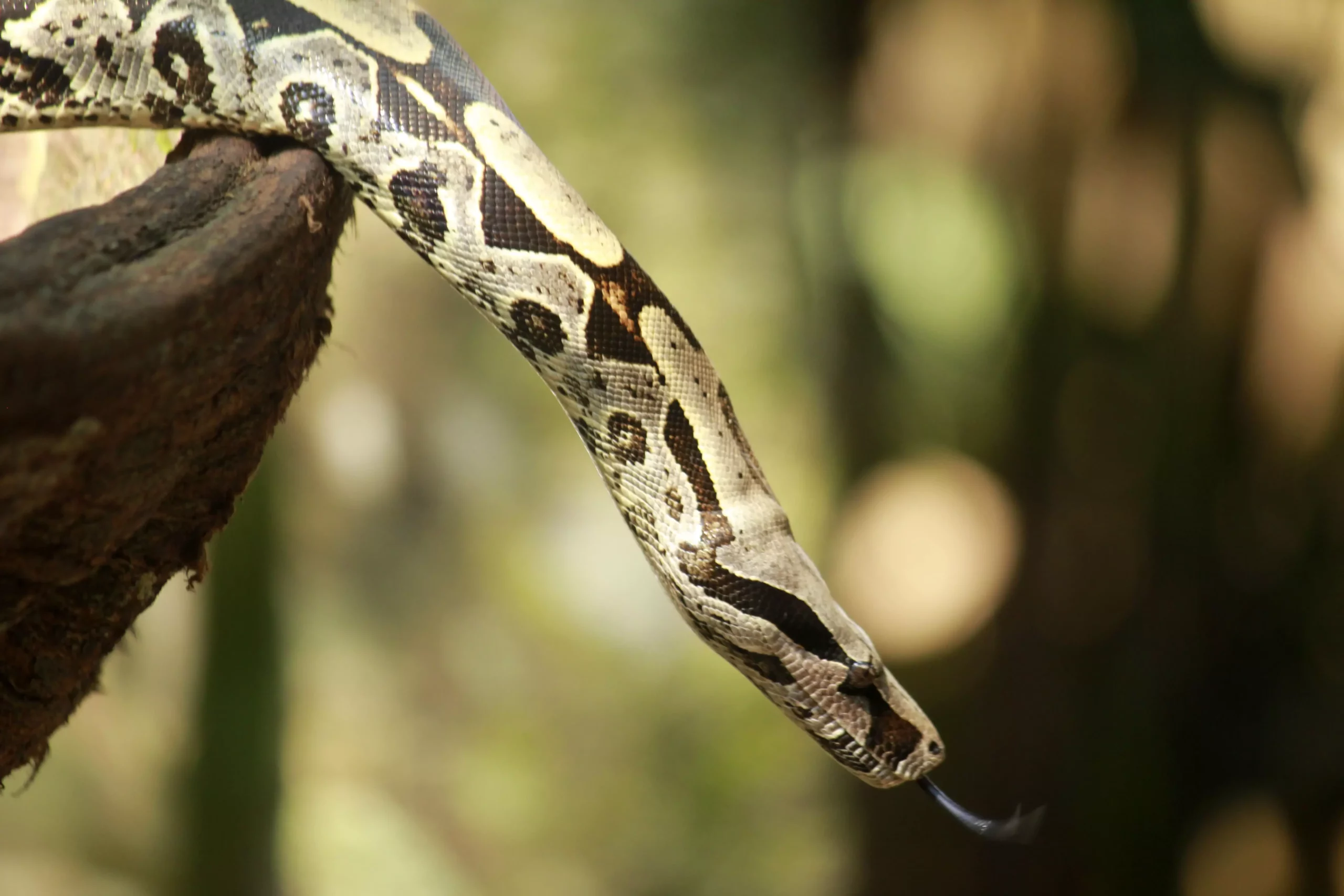The boa constrictor, known for its impressive size and gentle demeanor, is a popular choice among reptile enthusiasts and pet owners alike. With various subspecies available in the pet trade, such as the red-tail boa (Boa constrictor constrictor) and the northern boa (Boa constrictor imperator), understanding the needs and characteristics of these snakes is essential for anyone considering bringing one into their home.
Despite their inherent strength, boa constrictors are generally regarded as docile snakes. They exhibit a calm temperament and, with consistent handling, they can adapt well to human presence. However, potential owners must approach these creatures with respect and knowledge. Though they are often gentle, even a docile boa can constrict tightly if it feels threatened. Understanding how to properly handle a boa is crucial—supporting them appropriately helps them feel secure and reduces the likelihood of defensive behavior.
Young boa constrictors require frequent handling to become accustomed to human interaction. Building trust with these snakes can lead to a rewarding relationship, where they become calm and manageable pets. Although not overly demanding in terms of daily care, they do require a controlled environment to thrive.
Establishing an appropriate habitat for a boa constrictor is vital. Baby boas can comfortably live in glass aquariums, but as they mature, owners must provide larger enclosures—custom-built options might be necessary. A secure, spacious enclosure significantly enhances the wellbeing of a boa. Ideally, adult boas should have enclosures that measure around 6 to 8 feet in length and 2 to 3 feet in width. Ensuring that the enclosure is escape-proof is imperative due to the snake’s remarkable strength.
Inhabiting an environment enriched with hiding spaces provides the snake with comfort and security. A minimum of two hiding spots is essential, strategically located within the enclosure to correspond to the temperature gradient. Various types of hideouts can be utilized, such as commercial reptile caves or simple cardboard boxes, provided they fit snugly enough to ensure a sense of safety for the snake.
Given their tropical origins, boa constrictors require specific temperature ranges to ensure optimal health. A typical gradient should range from 82 to 90 degrees Fahrenheit during the day, with a basking area reaching up to 95 degrees. Nighttime temperatures can safely drop to 78 to 85 degrees. Owners must monitor these temperatures closely with several accurate thermometers placed strategically in the enclosure.
In addition to temperature, maintaining proper humidity levels—ideally between 60 to 70 percent—is essential. A water bowl not only provides hydration but also aids in humidity maintenance. Regular misting can assist in achieving the desired moisture level, which is particularly beneficial during shedding periods.
Feeding requirements vary as boas grow. Young snakes can be fed every five to seven days, while adults typically require meals every three to four weeks. The size of prey should never exceed the width of the boa’s body, and it’s crucial to avoid handling the snake for at least 24 hours post-feeding to reduce the risk of regurgitation. It’s also vital to promote proper feeding habits by never hand-feeding, as this may lead to misunderstanding from the snake, resulting in bites.
While young boas may eat mice, as they grow, they may need larger prey, such as rats or rabbits. Ensuring a balanced diet while monitoring for signs of obesity is an essential aspect of boa care, as many pet snakes can tend to overeat.
As with any pet, boa constrictors are prone to certain health issues. Inclusion body disease (IBD) represents a significant concern, as it can remain dormant for years and can escalate into severe symptoms. Regular health checks, especially when housed near other snakes, are crucial to prevent the spread of IBD and other respiratory infections caused by inadequate heating or humidity.
Signs of health issues such as wheezing, nasal discharge, or abnormal behavior should never be overlooked. Taking immediate action when observing these symptoms can make a tremendous difference in treatment outcomes and overall health of the snake.
When selecting a boa constrictor to bring home, assessing the snake’s health is critical. A robust boa constrictor should possess vibrant colors, clear eyes, and demonstrate active behavior. Ensuring that your new pet is captive-bred—rather than wild-caught—generally leads to healthier and more tractable individuals, benefiting both the snake and the owner.
A boa constrictor can provide years of companionship, enjoyment, and education for responsible owners. By understanding their complex needs and taking proper care, it becomes possible to foster a rewarding and enriching relationship with these remarkable creatures.

